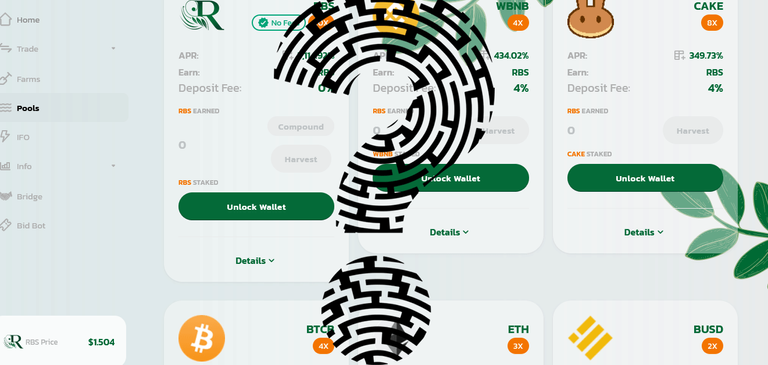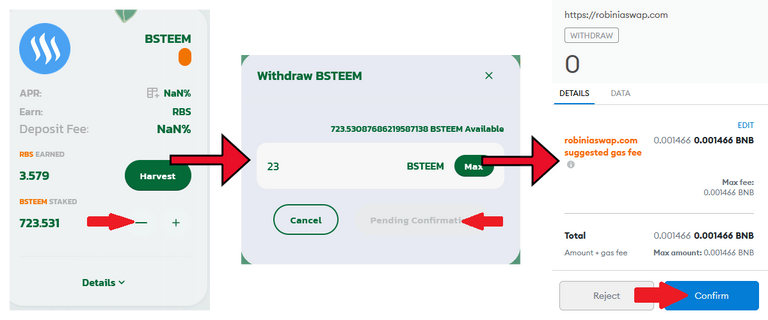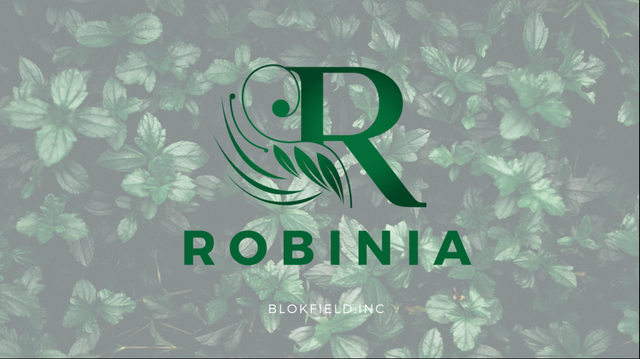As you guys know, Robiniaswap launched a few days ago and seems to be attracting increasing attention from the Steemit community. But, as is often the case, a new project comes with a lot of confusion since most users may not understand what it is or how it works.
Today, I'm going to share with you how to read and understand the parameters of each staking pool on Robiniaswap so you can conduct a comparison between them and may choose the most profitable one for you to stake your tokens

What is APR, multiplier, and total liquidity:
First of all, let's head over to Robiniaswap's pools: https://robiniaswap.com/pools
There are currently 13 staking pools on Robiniaswap- each of which has 3 distinct parameters:
- APR: Annual percentage rate
- Multplier: 1X, 2X, 3X...etc
- Total Liquidity
The first and most important one is the APR (Annual Percentage Rate) which is assumed to be the estimated yearly return that a pool will pay you if you keep staking your tokens into said pool.
However, there is a bit of misleading here because this percentages is NOT fixed, meaning it can (and will) change depending on the two factors that come next on the list... Multiplier & Total liquidity
Multiplier is determined by the protocol developers and is, in short, the number of tokens to be mined for each block multiplied by the X number.
For example (BNB pool), if the amount of tokens to be mined is 3 token/block and the multiplier of the pool is 3X, then the number of tokens to be mined for this particular pool is: 3 * 3 = 9 Token/Block
If the number of tokens to be mined per block is reduced to 1 and the multiplier of the pool is 3X, then the number of tokens to be mined for this particular pool will work out: 1 * 3 = 3 Token/Block
I should also point out the number of tokens mined per block is going to continue to gradually shrink over time and so will the APR
The other factor that contributes to making up the APR percentage is the total liquidity, which has an inverse relationship with the APR.
For instance, If the total liquidity of a pool is $1000 and you're staking $100, then your share of that pool would be %10.
However, If the total liquidity rises to $2000 and you're still staking the same $100, then your share will reduce to %5.
With Robiniaswap getting more exposure in the future, there may be more users joining it and contributing more liquidity. This means higher total liquidity and (again) lower APR again
And the most important thing about staking pools is to carefully select the coin/token you want to stake. This depends on how much you trust in that coin and its future. After all, what good does it make if we continue to accumulate RBS if the price of our staked token keeps going down?
For example, let's suppose that you're staking $600 worth of X token and the price of it drops by %30, that means you lost about $200, so even if you manage to mine say $50 of RBS token, to the bottom line would be in red (- $150).
On the other hand, if you're staking %600 worth of Y token and the price of it goes up by 30%, that means you've gained $200 in addition to what you've earned of RBS tokens
So, yea, a bit of strategic thinking is required here...
Deposit fee:
Another parameter to note is the deposit fee, which is set at 4% for all pools except the RBS pool (no deposit fee).
This basically means that if you are to deposit 100 tokens for staking, 4% of them will be cut as a fee. And according to the team behind Robiniaswap, those fees will be used to buy back and burn RBS tokens. A bullish mechanism that's meant to push the price up...
No lock-up periods:
The last thing I would like to mention in today's post is that there are no lock-up periods within Robiniaswap. That means you can stake/unstake your tokens without having to wait a single minute. As you can see, here I liquidated 23 bsteems of my staked tokens. All it requires is to click that minus button, set the amount you want to unstake, confirm, and get your tokens completely at your convenience.

Final thoughts:
At the end of this post, I'd like to point out again that Robiniaswap is still so new and there are not so many people knowing about it so far. So, it might be a "golden chance" to engage with it right now and make some profitable gains especially from staking pools. That's exactly why our highly respected friend @crypto.piotr is encouraging several users to share their experiences about Robiniaswap and was even generous to lend some PH members liquid Steems to make them able to try staking on Robiniaswap and enjoy those sweet earned RBS tokens
Not financial advice, but I personally think it is worth a try.

useful links:
WEBSITE: https://robiniaswap.com/
RobiniaSwap Documentation: https://robiniaswap.gitbook.io/robiniaswap/
Steemit: https://steemit.com/@robinia
Discord Channel: https://discord.gg/HvjZJYvXcD
Learn how to mine Robinia Token in RobiniaSwap Pool by @josevas217
Thanks for reading
Congratulations! This post has been upvoted by the @blurtcurator communal account,
You can request a vote every 12 hours from the #getupvote channel in the official Blurt Discord.Don't wait to join ,lots of good stuff happening there.